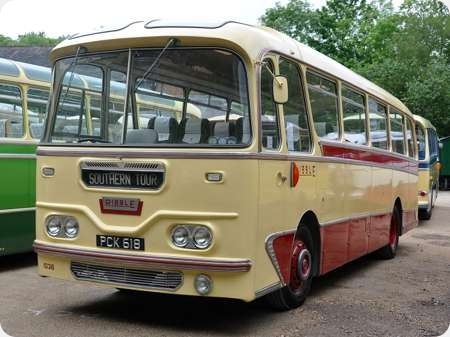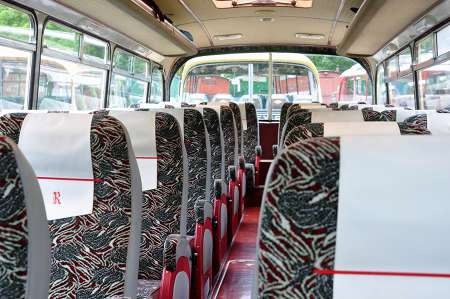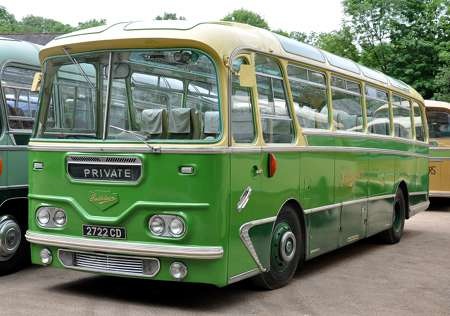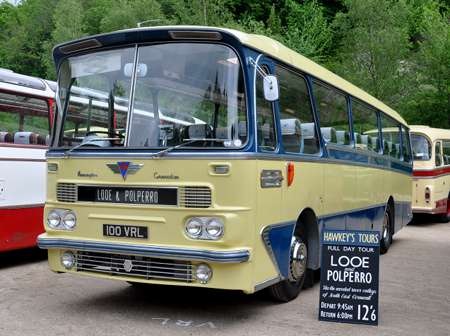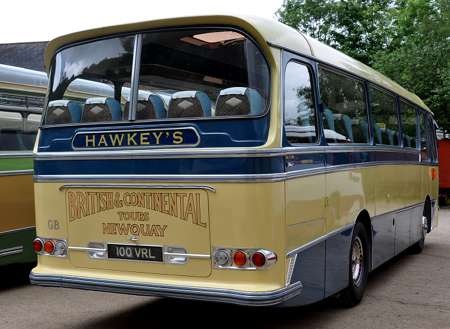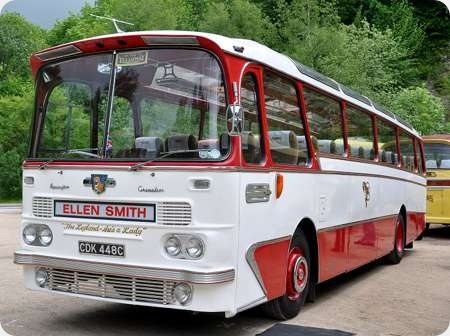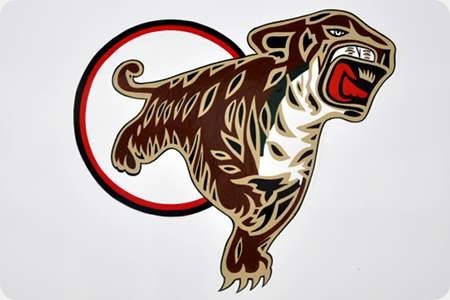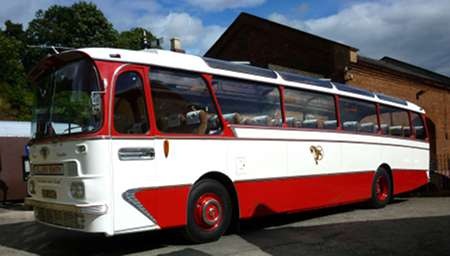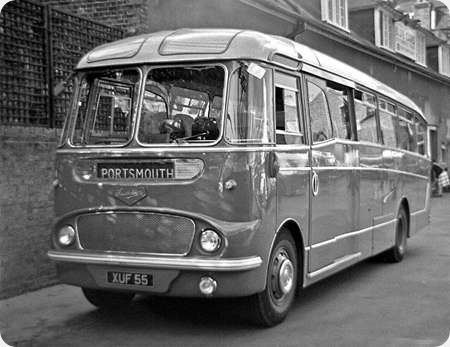
Southdown Motor Services Ltd
1960
Commer Avenger IV
Harrington C35F
Southdown, ever primarily a Leyland operator (though Guy got a look in from time to time) also had a
modest requirement for lighter chassis. Despite having operated the OB model successfully, Southdown
then eschewed the Bedford SB when it looked for a lightweight coach chassis in the late 1950s. It is
understandable that the Bedford petrol engine did not appeal, and the alternative Perkins R6 was not a
very attractive diesel option either. From 1960 Bedford offered the SB with a Leyland engine, but even
this did not entice the Southdown company. Instead, whilst still favouring Leyland’s lightweight Tiger
Cub, hitherto highly conservative Southdown became surprisingly interested in the unconventional Tilling
Stevens TS3 opposed piston, three cylinder, horizontal two stroke engine, and bought 25 Beadle Rochester
C41F coaches in 1956-57. In 1959, after further Tiger Cub deliveries, Southdown returned to the TS3
engine with a batch of 15 Commer Avengers with Burlingham C35F bodies, their first from this
coachbuilder since the 1930s. Another batch of 15 Avengers followed in 1959-60, but these were given
Harrington Crusader Mk1 C35F bodies. The Beadles and the Commers all gave up to 12 years service with
Southdown, the last being sold off in 1971. I recall seeing - and hearing - the Avengers quite regularly
on the Brighton service along the A23. Their distinctive sound was unmistakeable. Seen here tucked away
in a corner of Victoria Coach Station in 1960 is the last of the Harrington batch, No.55, XUF 55.
Photograph and Copy contributed by Roger Cox
10/03/16 - 15:45
I hope the panelling and upholstery had sound deadening qualities of the
highest order. Detroit diesels of the period had a reputation for noise but the TS3 was in a league
of its own!
Phil Blinkhorn
11/03/16 - 05:56
A further batch followed 41-55 shown in Roger’s picture. There were 15,
numbered 56-70 (56-70 AUF) and were also bodied by Harrington. I assume that they were identical to
the earlier batch, but my memory of seeing them can no longer recall any detailed differences, if
any. I have just looked through the 2-volume history of Southdown by Colin Morris (Venture 1994),
and the Vol.2 fleet list only prints the Beadle-Commers 1-25, and has neither list or photo of the
Commer Avengers 26-70! Perhaps he had been deafened by the first 25?
Michael Hampton
11/03/16 - 05:56
It may be the angle of the photograph but this vehicle has a rather narrow
look about it. Were these coaches 7ft 6ins. or 8ft. wide?
Chris Barker
11/03/16 - 05:57
I’m not sure, Phil. I’ve been in a TS3-engined bus only twice: once in recent
years in a preserved coach at King Alfred Running Day at Winchester, and once fifty years ago
driving some folk from Reading to Portchester, Hants, in a coach belonging to Spiers of
Henley-on-Thames. As to the noise emanating from the exhaust pipe I agree with you all the way, but
inside the vehicles things seemed reasonably quiet. Perhaps I enjoyed the sound so much that I was
making undue allowances for it…
Commers raise a question in my mind: are they really a
lightweight in the same sense as a Bedford or a Ford is?
We often call the Leyland Tiger Cub a
lightweight, but I’d prefer a term like "three-quarterweight" or "quality
lightweight", since the feel of a Tiger Cub is solid and precise, like that of a heavyweight.
In the same way a Guy LUF is every bit as solid as the over-heavy UF.
On that basis perhaps
the Commer is a "five-eighths-weight".
Interested to hear fellow OBP-ers’
views.
Ian Thompson
11/03/16 - 12:05
I don’t recall seeing any of these at all - were they based in Portsmouth?
I’ve found a photo of one of each batch side-by-side and they look identical. SEE http://tinyurl.com/z49qe6x
Chris Hebbron
11/03/16 - 15:26
That’s a fine image of the two examples from each batch standing together. The
only difference I can see is that the XUF driver’s mirrors are attached at the top of the
windscreen, whereas the AUF mirrors are attached at the bottom. (And of course the windscreen wipers
are facing in opposite directions…). My 1970 fleet list (SEC) shows the Portsmouth allocation
as 6 XUF + 3 AUF [9], Eastbourne 4 XUF + 3 AUF [7], Worthing 7 AUF, and Brighton 5 XUF + 2 AUF [7],
so they were quite well spread along the coast. The earlier Burlingham bodied batch (26-40) were at
Eastbourne (3), Brighton (6), and Chichester (6). This is likely to have been their final
allocations as Roger Cox notes that they had all gone by 1971, and the list I’m quoting from is
accurate to 1st November 1970.
Michael Hampton
12/03/16 - 05:47
There is one more minor difference between them and that is that the XUF’s
sported only a nearside spotlight; the AUF’s, one each side. Thanks, for the allocation details,
Michael. You’d have thought that Southdown would have kept them all at one depot for ease of
maintenance. Whilst I was looking for a photo of the other batch, I noticed photos of some of these
vehicles working for contractors, showing that some had a further life beyond Southdown.
Chris Hebbron
12/03/16 - 05:48
I think all of Southdown Commer coaches and all of the Commer-powered Beadle
coaches were eight foot wide. The reason that the Harrington-bodies look narrow is that they are
tall compared to similar bodies on Thames or Bedford chassis.
Stephen Allcroft
Roger Cox
Thanks, Michael for reminding me that there was a further batch of the
Harringtons. The straight framed Avenger was introduced in 1949, and the overall dimensions of the
109 bhp 4.75 litre six cylinder petrol engined Mk I were 27ft 6ins by 7ft 6ins. In 1952 the Mk II
increased the available dimensions to 30 ft by 8ft, but the petrol engine was retained. Then, in
1954, the Mk III appeared offering the TS3 engine as an option, and this became the Mk IV from 1956
when the petrol and smaller chassis alternatives were dropped. The standard rear axle ratio was 4.3
to 1, but the Eaton two speed axle was also offered. Taking up Ian’s point about internal noise, the
compact horizontal engine was installed over the front axle where the (no doubt well insulated)
floor went over it, and this contributed to the apparent height of the vehicle. The engine was thus
some way forward of the main saloon. Externally, of course, it was a different matter, and one could
hear TS3 powered coaches and lorries approaching when they were still leagues distant. The TS3
engine developed 105 bhp at 2400 rpm, but as with other large two strokes, the torque curve was very
peaky. Torque rose from 245 lb ft at 800 rpm to a maximum of 270 lb ft at 1200 rpm, but then fell
away sharply to 225 lb ft at the 2400 rpm governed speed. Theoretically, the 3.26 litre two stroke
TS3 equated to a four stroke motor of about 6.5 litres, though some efficiency and power losses
inherent in the type, notably the requirement for a Roots blower to aid induction and scavenging of
the cylinders, does prejudice a direct comparison. Nevertheless, as an illustration, the Gardner 5LW
of 6.974 litres yielded 300 lbs ft of torque across the entire working speed range. At 1700 rpm the
TS3 delivered only some 87 bhp against the 94 bhp of the Gardner. Even so, fuel consumption figures
of up to 20 mpg were claimed for the TS3. The standard gearbox in the Avenger Mk IV was a four speed
synchromesh unit, for which an optional overdrive was available, but a close ratio five speed
constant mesh box was also offered. I am not sure which of these the Southdown coaches had, though I
suspect the synchromesh. According to my records, the bare chassis weight of the Avenger was 3.125
tons, the maximum permissible gross weight being 9 tons. The maximum gross weight figure for the
contemporary Bedford SB was 8.26 tons. The unladen weight of a bodied contemporary Tiger Cub was
about 6 tons, which, with the full added weight for passengers, fuel, luggage etc, would raise this
to a maximum of around 9 tons. Perhaps, as Ian suggests, the Avenger was in a similar weight
category to the Tiger Cub rather than that of the lighter Bedford.
Roger Cox
13/03/16 - 14:54
Thx for the extra information, Roger. 20mpg was very good fuel consumption and
quite possible the prime reason, along with reliability, why this engine was so popular, when two
strokes were not highly regarded generally. I don’t know how general is the knowledge that Rootes
were well into developing a four-cylinder version of the engine, with several prototypes on the
bench. However, this was stymied by the Chrysler takeover and a clash with a similar effort between
Chrysler and Cummins. This resulted in a TSR2 scenario, with orders to scrap all traces of this
engine’s existence. Suffice to say that the Cummins engine was a complete failure and with the Plan
B TS4 scrapped, that was it. There are some stupid people about! The full story can be found here:
http://tinyurl.com/gvjjutt
Chris Hebbron
14/03/16 - 06:52
I can confirm that my TS3 Rochester regularly achieves 18/20 mpg unless on a
hilly route.
My father was development driver for the TS4 and I believe there is a thread
somewhere on here about that engine
Roger Burdett
19/03/16 - 17:34
Roger Burdett’s actual consumption of 18-20 mpg for his TS3 Rochester is very
impressive. The power saved by having no valvegear to drive must be more than balanced by the energy
needed to drive the Roots blower, and all those extra large moving parts look as though they ought
to sap power, but evidently not. Since simple crankcase-scavenge 2-stroke engines—whether
petrol or diesel—always show poor fuel consumption, it’s easy to assume that all 2-strokes are
thirsty by nature, yet the most economical prime mover ever built was the Wärtsilä-Sulzer RT-flex
96C 2-stroke marine engine, which is well worth Googling, until it was recently just overtaken by a
4-stroke engine (model 31) by the same Finnish builder. Both these engines are admittedly a trifle
bulky for a coach, but they show what’s possible.
Roger, how does the consumption of your
rear-engined Foden coach compare with that of other vehicles of a similar weight?
Ian Thompson
21/03/16 - 09:00
Ian my Foden consumption is around 12mpg but is inherently more unreliable
than the Commer. The fuel system is more complex with a hydraulic governor and to be honest has not
had the use it deserved. My LS Gardner powered which is comparable weight is c13.5mpg. The Leylands
do around 12 and the Midland Reds 10.
As a rule all my Gardners do 13-14mpg whether 5LW; 6LW,
or 6HLX except for my Tilling Stevens which with an overdrive 6LW does 17/18. The Commer is 3.1
litre with no overdrive but is incredibly fuel efficient as you say with the direct injection and a
fairly low vehicle weight. The Roots blower once it is moving has far fewer parts than a a vehicle
with valve gear. I do run the vehicle between 55-65mph on the motorway which always surprises speed
limited modern coaches!
Roger Burdett
